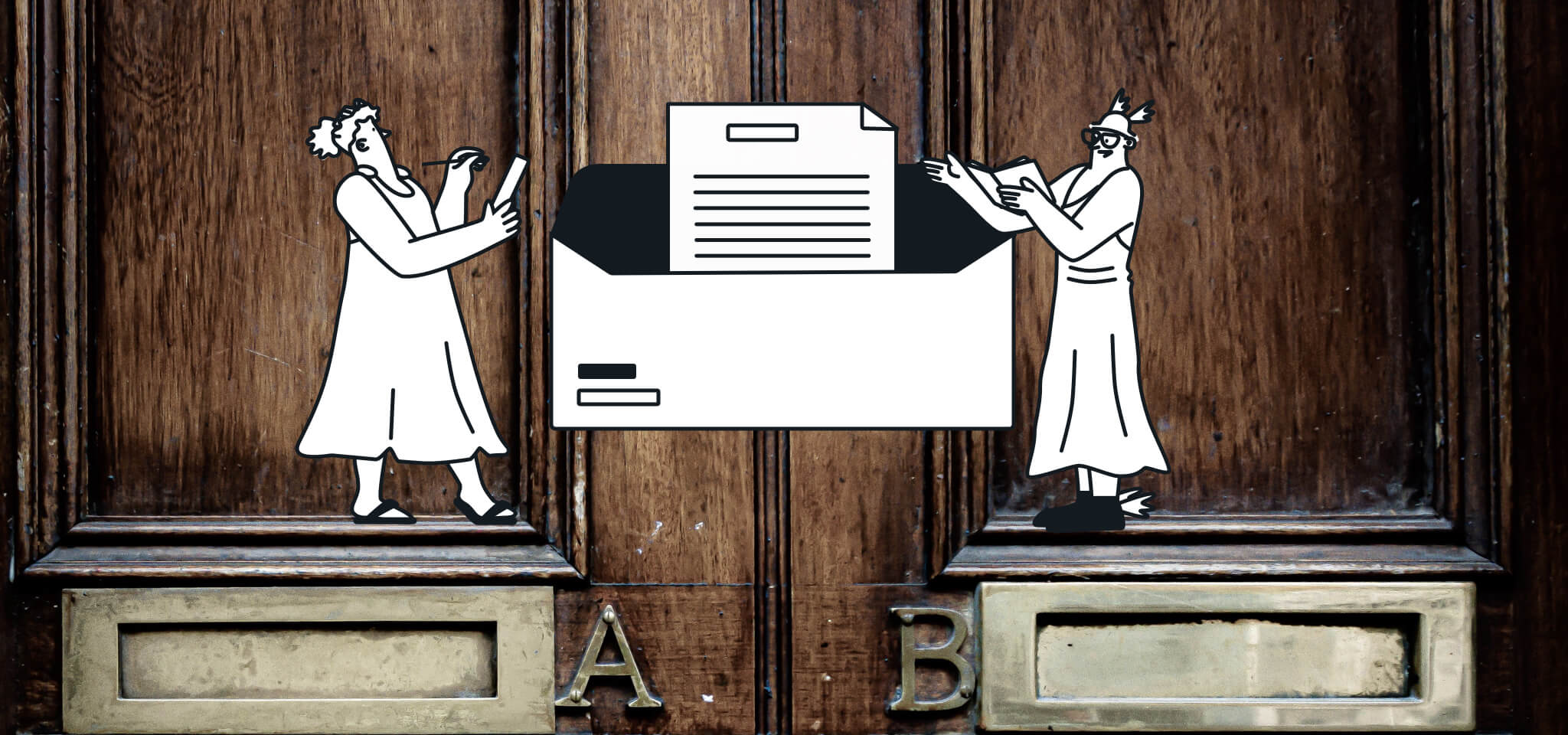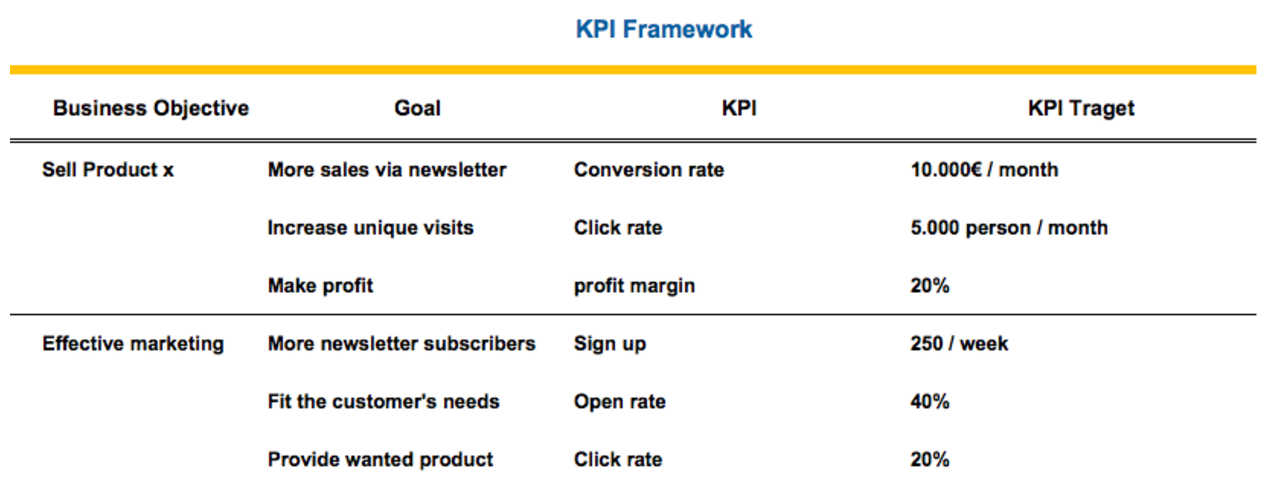Email best practices
8 essential email marketing KPIs and how to track them

Email best practices

Many articles talk about creating the best marketing campaign for individuals and businesses. Hey, we’ve even written some of them. But truth be told, email marketers don’t design the best campaigns overnight.
The most successful marketers release email content to first measure their success. Then, they tweak what worked or didn’t to send out more refined materials the next time. They measure their campaign’s capability by reviewing its key performance indicators, or KPIs.
Before we get ahead of ourselves, let’s explore what KPIs are and how you can use them to measure your email marketing campaign’s success.
KPIs are used by organizations as a benchmark to evaluate the success of their marketing strategy against predefined targets. We’re talking email marketing metrics that help you make qualified decisions and identify activities that might need to be rethought. Meeting or surpassing defined KPIs could positively impact your email deliverability.
The hard part is choosing the right metrics and not succumbing to data paralysis. Follow these four steps and showcase your digital marketing know-how.
If you don’t have clear business objectives, you won’t set email marketing KPIs. Remember, every action you take should help you achieve your KPIs and your organization’s objectives. For example, these could include selling a certain product, reaching certain marketing goals, and building brand trust.
With your defined objectives in mind, it’s time to create specific goals. To determine your goals, ask yourself and your team:
Take these answers and look for common themes.
Possible specific goals could include:
Now it’s time to set up specific email KPIs to measure your achievements. Think about what data will validate your goals. You might want to consider new sign ups per month, increased open rates, and the number of visits to your website. We could go on forever, but we won’t.
Once your KPIs are set, they each require an achievable target value. Setting concrete numbers will let you know if you achieve your targets. For example, 5,000 new customers, 250 sign ups per week, 30 percent open rate, etc. Quantifying your success can help you adjust your strategy accordingly.

We don’t want you to leave this article empty-handed. So let’s explore the eight most essential KPIs for any email marketing campaign, kind of like a cheat sheet on what you should keep an eye on.
A click-through rate (CTR) is the percentage of people who received and clicked on the links in your emails compared to those who didn’t.
Here’s the formula for calculating CTR: All clicks or distinctive clicks, divided by the total number of emails sent, multiplied by 100.
Do us a favor: Contact any email marketer and ask them what their most important metric is. We’ll wait. Did they say CTR? We knew it.
Once you know your CTR, you can measure how your email marketing campaign performs over time and anticipate or make any changes accordingly.
Marketers also use A/B tests, which compare two or more versions of an app, webpage, or even email copy, to determine which one will perform better.
Modulating CTR is an excellent method for creating different versions of your marketing emails with A/B testing. In other words, CTR can be used alongside A/B testing to help improve your email marketing results.
Think of this as the amount of profit earned compared to how much your email marketing campaign costs you to create and deliver.
Email marketers calculate this as total earnings divided by campaign cost. To put this differently, we take away the money invested in the campaign from the revenue generated from sales, divided by the total amount financed in the campaign, multiplied by 100.
The higher the percentage, the more efficient and profitable the campaign.
How well your campaign performs can affect your ROI. Let’s say your engagement is way down, or your brand awareness needs work. You’ll have fewer conversions if your marketing efforts aren’t successful.
You may consider throwing more money at the issue, but unfortunately, more money spent doesn’t always yield a higher ROI. We suggest using A/B testing and comparing different versions of your content.
Savvy email marketers like you can use ROI results to show your management how much budget is required.
This is the ratio between the total number of email recipients and the number of people who open an email.
Calculate your open rate using the total individual opens, divided by the total number of email recipients, multiplied by 100.
Open rates can under report how often your emails are opened. The problem here is many (EMS) users have enabled an image blocker to protect themselves from fraudsters sending spam and other harmful content. Unfortunately, these safety measures also block images, and when they do, your emails don’t count as being opened, which lowers your open rate.
Email marketers spend a lot of time messing around with their subject lines, trying to make them attract the coveted clicks. However, we recommend focusing on boosting open rates and their CTR instead.
Conversion rate is the percentage of the people who opened an email and performed a desired action compared to the total number of recipients. Examples of such an action could include filling out a survey, subscribing to an email newsletter, or purchasing a new product.
As you might expect, calculating this metric is relatively simple. Just take the number of recipients that performed an action, divided by the total number of emails you sent, multiplied by 100.
Simply put, the conversion rate is affected by the success rate of your call to action (CTA) and associated campaign. For example, if your goal is to boost subscription rates to build an email list, and your CTA says, “Sign-up for junk mail,” your conversion rate will inevitably be low. If your CTA piques your readers’ interest and they click through, you have yourself a conversion.
A “conversion” can be counted as each desired action performed. In other words, each time your CTA s쳮ds, you can add a notch to your tally of successful conversions.
Therefore it’s not surprising that the conversion rate is often considered among the most valuable ways to measure the success of one’s marketing campaign.
We recommend a simple email platform and analytic web integration to improve this metric’s result. Doing this allows you to track every unique URL click stemming from the marketing emails you’re sending.
In email marketing, your unsubscribe rate refers to the relationship between the people who receive your emails and those who unsubscribe upon receiving them.
To determine how high or low your unsubscribe rate is, take the number of people who unsubscribe, divided by the total number of emails you sent out, multiplied by 100.
The unsubscribe rate doesn’t give a complete and accurate picture of how healthy your email list is because some recipients are unengaged yet too lazy to unsubscribe.
For these reasons, to improve your unsubscribe rate or increase its accuracy, you should focus more on your CTR and conversion rates. Doing so keeps your eyes glued to the general engagement of your email list and, in turn, will expose email list freeloaders, leading to much higher KPIs, including your unsubscribe rate.
Your bounce rate compares the total number of sent emails to the number of emails that weren’t delivered successfully.
To calculate your bounce rate, divide your amount of bounced emails by how many emails you sent in all, and multiply that by 100.
First, we should explain “hard” and “soft” bounces to take this metric to the next level. These adjectives describe how an email can bounce.
Soft bounces happen because of a short-term issue with the validity of a particular email address. If an email isn’t delivered to a given inbox because that recipient’s inbox is bursting at the seams with emails without any wiggle room to accept yours. In such a case, resending your email later might not result in a soft bounce.
On the other hand, hard bounces happen when an email can’t be delivered because the recipient’s email address doesn’t exist. These emails will never be delivered because you’re essentially sending an email to no one.
To improve this metric, you should actively groom your email list and remove any inactive email addresses. Giving your email list regular TLC will help your bounce rate, but it will also help you avoid an internet service provider’s (ISP) blocklist. They use factors like your email sender reputation and bounce rate to decide whether or not to send you to the ISP blocklist.
A list growth rate is pretty straightforward because it’s just an assessment of how much your email list has grown.
Calculating your email list growth takes the number of new subscribers you have at a given moment, subtract the unsubscribes or spam reports, divide by the total number of emails on your list, and multiply by 100.
It might sound obvious, but your unsubscribe and bounce rates play a huge role in the size of your email list. While trying to maintain a consistent level of growth matters, when it comes to your list growth rate, engaged email recipients matter far more than the number of them on your list.
Both your bounce and list growth rates will fluctuate over time. So it’s vital to keep an eye on your subscriber list. You want to maintain it regularly, so it’s the size you need to suit your needs.
Basically, this is a way to measure organic growth among your email list subscribers.
To calculate this rate, you take the number of times a given email was shared or forwarded, divide it by the total number of emails successfully delivered, and multiply that number by 100.
The rate at which your email recipients organically share your content is one of the more critical metrics in any email marketing campaign.
Organic growth means new, engaged users, clients, or customers. When they share your content with their personal and professional network, they’re likely to become new active members for you if they like your stuff.
Stay on top of this metric to learn what kind of content is shareable among your audience. You’ll naturally become more in tune with your audience’s pain points.
Keep your readers on your side by creating email campaigns that fit their needs. If you’re unsure where to start, there’s no harm in asking them what they’d like to see. What topics can’t your audience get enough of? What products and services do your customers want? People want to be entertained.
Test different types of interactive content like videos, animated pictures, polls, interactive maps, accordions, and more.